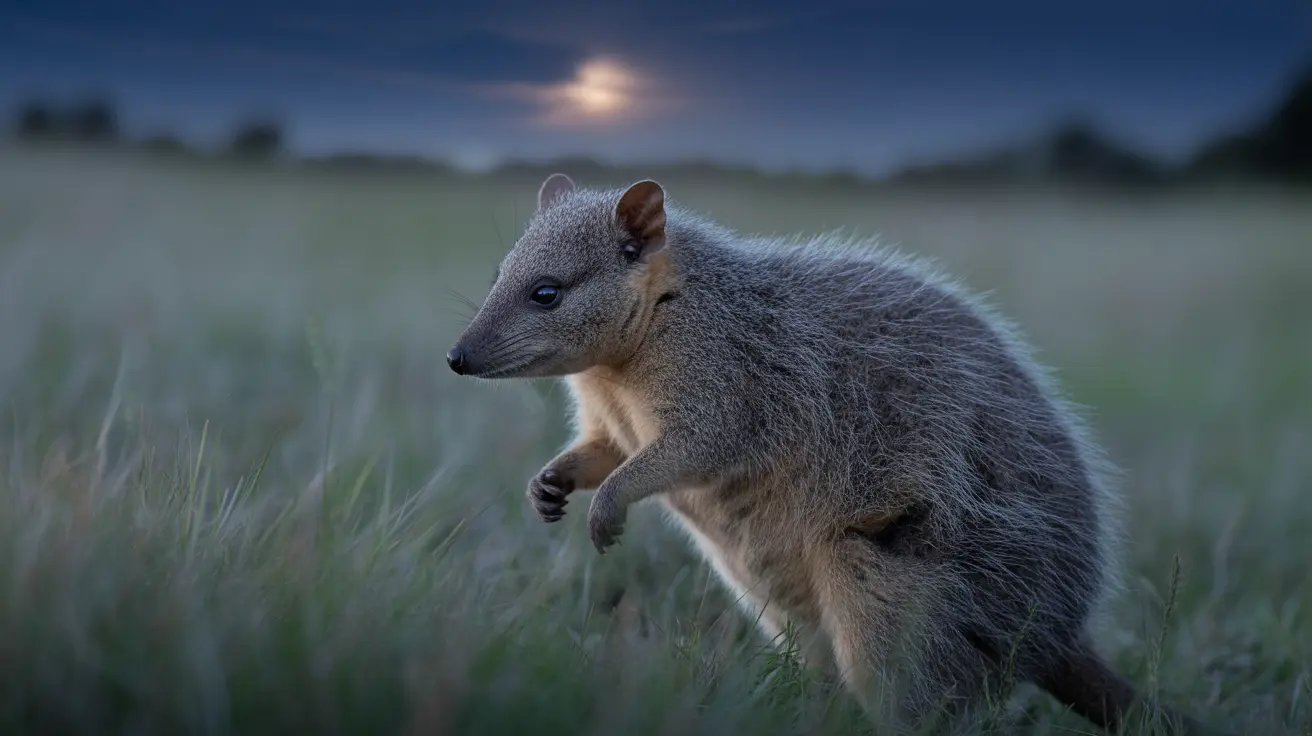Australian bettongs possess an extraordinary ability that sets them apart in the animal kingdom: these small marsupials can crack open extremely hard seeds that would break the jaws of much larger creatures. This remarkable bettong seed cracking capability demonstrates how evolution has equipped these tiny animals with powerful biomechanical adaptations that allow them to access food sources unavailable to most other species.
Understanding the unique feeding abilities of bettongs offers valuable insights for pet owners and wildlife enthusiasts alike. While these native Australian marsupials aren't typical household pets, their specialized dietary requirements and feeding behaviors provide important lessons about the critical role of proper nutrition in maintaining healthy jaw function and overall well-being in all animals.
Extraordinary Bettong Bite Force and Jaw Adaptations
The burrowing bettong diet relies heavily on accessing nutrient-rich seeds encased in extremely hard shells, including sandalwood and quandong seeds that resist the efforts of most small to medium-sized animals. These brush-tailed bettong adaptations represent millions of years of evolutionary refinement, resulting in skull and jaw structures capable of generating tremendous bite forces relative to their body size.
Bettong skull biomechanics reveal specialized muscle attachments and bone density that enable these marsupials to exert crushing forces far exceeding what their compact size might suggest. The unique architecture of their skulls distributes stress efficiently, preventing jaw fractures while applying sufficient pressure to crack open the hardest seed coats.
The Science Behind Santalum Seed Cracking
Santalum seed cracking presents one of the most challenging feeding tasks in the Australian ecosystem. These seeds, produced by sandalwood trees, have evolved extremely hard protective shells as a defense mechanism against seed predation. However, bettongs have developed counter-adaptations that allow them to overcome these natural defenses.
The process involves precise positioning of seeds within the marsupial's mouth, followed by the application of targeted bite force at specific weak points in the seed structure. This technique requires not only powerful jaw muscles but also sophisticated neuromuscular coordination that develops through practice and experience.
Ecological Role of Bettongs in Seed Dispersal
Beyond their impressive mechanical abilities, Australian marsupial seed predators like bettongs play crucial roles in ecosystem health through seed dispersal by bettongs. After cracking open hard-shelled seeds, these marsupials often transport fragments to different locations, inadvertently promoting plant reproduction and genetic diversity across landscapes.
This ecological relationship benefits both bettongs and the plant species they interact with, creating a complex web of interdependence that has shaped Australian ecosystems for millions of years. The loss of bettong populations can therefore have cascading effects on plant communities and overall biodiversity.
Bettong Dietary Requirements and Feeding Behavior
Bettong feeding behavior extends beyond seed cracking to include a diverse range of food sources, though their ability to access hard seeds provides a crucial nutritional advantage during times when softer foods become scarce. Captive bettongs require diets that challenge their jaw muscles and maintain their natural feeding behaviors.
For wildlife rehabilitators and researchers working with these marsupials, providing mechanically challenging foods is essential for maintaining proper jaw strength and preventing dental problems. This principle applies to many pet species as well, where appropriate chewing opportunities support oral health and behavioral enrichment.
Conservation Efforts and Habitat Protection
Bettong conservation efforts must account for the specific dietary and biomechanical needs of these unique marsupials. Protecting habitats that provide access to the hard seeds these animals depend on is crucial for maintaining viable populations in the wild.
Conservation strategies often focus on preserving diverse plant communities that produce the range of seed types necessary to support healthy bettong populations. Understanding the boodie seed cracking abilities and woylie marsupial diet requirements helps conservationists design more effective protection programs.
Frequently Asked Questions
How do bettongs manage to crack open extremely hard seeds like sandalwood and quandong that most small animals cannot?
Bettongs possess specialized skull and jaw adaptations that enable them to generate extraordinary bite forces relative to their body size. Their unique bone structure and muscle attachments distribute stress efficiently while applying targeted pressure to crack even the hardest seed shells.
What are the specific skull and jaw adaptations that allow burrowing bettongs and brush-tailed bettongs to exert such strong bite forces?
These marsupials have evolved dense bone structures, specialized muscle attachment points, and optimized jaw geometry that maximizes bite force while preventing injury. Their skull architecture efficiently transfers forces from jaw muscles to create crushing pressure at specific contact points.
Why is it important for captive bettongs to have diets that include mechanically challenging foods?
Mechanically challenging foods help maintain proper jaw muscle strength and prevent dental problems in captive bettongs. These foods also provide behavioral enrichment that supports natural feeding behaviors and overall psychological well-being.
The remarkable seed-cracking abilities of bettongs showcase nature's incredible capacity for specialized adaptation. These tiny marsupials remind us that size doesn't determine capability, and their unique biomechanical innovations continue to inspire researchers studying animal behavior and conservation biology.





